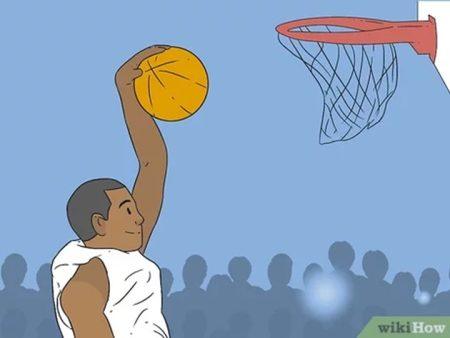Understanding the Basics of Volleyball

Before you can play volleyball, it’s important to grasp the fundamental concepts of the game. Volleyball is played by two teams of six players, with the objective of scoring points by sending the ball over a net and into the opponent’s court. The game can be played indoors or on the beach, and it has gained immense popularity worldwide, with millions of fans and players.
History of Volleyball
Volleyball was invented in 1895 by William G. Morgan in Holyoke, Massachusetts. Initially called “mintonette,” the game was designed as a combination of basketball, baseball, tennis, and handball. Over the years, it evolved into the sport we know today, with established rules and regulations.
The Objective of the Game
The main goal of volleyball is to score points by hitting the ball over the net and landing it in the opposing team’s court. A match is typically played in a best-of-five sets format, with teams needing to score 25 points to win each set. If a fifth set is necessary, it is played to 15 points.
Scoring System
Points can be scored in two ways:
- Rally Scoring: A point is scored on every serve, regardless of which team served the ball. This system is used in most competitions today.
- Side-Out Scoring: Only the serving team can score points. This method has become less common.
Basic Rules of Volleyball
Understanding the basic rules of volleyball is essential for both players and spectators. Here are some key rules to keep in mind:
- Rotations: Teams must rotate positions clockwise every time they win the serve from the opposing team.
- Hits: Each team is allowed a maximum of three hits to return the ball over the net. A player may not hit the ball twice in succession (except during blocking).
- Net Touch: Players cannot touch the net during play. If they do, it results in a point for the opposing team.
- Foot Faults: Servers must not step on or over the service line when serving. Doing so results in a fault.
- Out of Bounds: A ball landing outside the court boundary results in a point for the opposing team.
Positions in Volleyball
Understanding the different positions in volleyball is crucial for effective teamwork. Each position has specific roles and responsibilities.
Outside Hitter (Left Side Hitter)
- Role: Primarily responsible for attacking the ball from the front row. They also play defense in the back row.
- Skills: Good jumping ability, strong hitting skills, and the ability to read the game.
Middle Blocker
- Role: Focuses on blocking the opponent’s attacks and quick hits. They also attack the ball on quick sets.
- Skills: Fast footwork, excellent timing, and good vertical jump.
Setter
- Role: The playmaker of the team, responsible for setting up attacks. They touch the ball more than any other player.
- Skills: Good hand coordination, quick decision-making, and strong communication skills.
Opposite Hitter (Right Side Hitter)
- Role: Plays opposite the setter and is usually a strong attacker and blocker.
- Skills: Versatile, capable of hitting from both the front and back rows.
Libero
- Role: A defensive specialist who cannot attack the ball above the net height. They wear a different colored jersey.
- Skills: Excellent passing and defensive skills, quick reflexes.
Defensive Specialist
- Role: Similar to the libero, but can be substituted in for any player on the court to improve defense.
- Skills: Strong defensive skills and the ability to serve.
Essential Skills to Master
To excel in volleyball, players need to master various skills. Here’s a breakdown of the essential skills you’ll need to develop.
Serving
Serving is the first action in every play, making it crucial for gaining an advantage. There are several types of serves:
- Underhand Serve: A beginner-friendly serve where the ball is hit with an underhand motion.
- Overhand Serve: A more advanced serve that uses a full arm motion to hit the ball, allowing for more power.
- Jump Serve: A high-impact serve where the player jumps to hit the ball, creating additional speed and force.
Tips for Serving:
- Focus on your stance and grip.
- Aim for consistency over power, especially as a beginner.
- Practice different types of serves to become versatile.
Passing
Passing is often the first touch after receiving a serve or an opponent’s attack. A good pass allows the setter to execute an effective play.
- Forearm Pass (Bump): Used to receive serves or low balls. Players should keep their arms straight and firm.
- Overhead Pass: Used for higher balls. The hands should be positioned above the forehead to accurately direct the ball.
Tips for Passing:
- Keep your eyes on the ball.
- Use your legs to generate power.
- Communicate with teammates to avoid confusion.
Setting
Setting is crucial for orchestrating the team’s offensive plays. The setter’s job is to deliver accurate sets for attackers to spike.
Tips for Setting:
- Position your hands correctly, forming a triangle above your forehead.
- Keep your feet shoulder-width apart for balance.
- Always anticipate the ball’s trajectory.
Hitting
Hitting, or spiking, is the primary way to score points in volleyball. A successful hit requires timing, technique, and strategy.
Tips for Hitting:
- Approach the ball with a quick, controlled run.
- Jump off both feet for maximum height.
- Aim for open spaces on the opponent’s side of the court.
Blocking
Blocking is a defensive skill aimed at preventing the opponent’s attack from crossing the net.
Tips for Blocking:
- Position yourself in front of the hitter.
- Jump with both feet to maximize height.
- Keep your hands high and fingers spread wide to cover more area.
Digging
Digging is a defensive move used to prevent the ball from hitting the floor after an opponent’s attack.
Tips for Digging:
- Stay low with your knees bent and weight on your toes.
- Keep your arms in front of you to receive the ball.
- Read the hitter’s approach to anticipate the attack.
Volleyball Techniques and Strategies

Understanding various techniques and strategies can enhance your performance on the court.
Team Strategies
- Communication: Always communicate with teammates to ensure everyone knows their roles.
- Formation: Utilize different formations (e.g., 6-2 or 5-1) to adapt to different playing styles.
- Defensive Alignments: Adjust your defensive setup based on the opponent’s strengths.
Individual Strategies
- Reading the Game: Observe the opponent’s movements to predict plays and react accordingly.
- Maintaining Focus: Stay mentally engaged throughout the match, anticipating plays and staying alert.
- Fitness and Conditioning: Keep your body in peak condition through regular workouts, focusing on strength, agility, and endurance.
Tips for Beginners
If you’re new to volleyball, here are some essential tips to help you get started:
- Practice Regularly: Consistency is key to improvement. Set aside time each week to practice different skills.
- Join a Local League: Playing with others can enhance your skills and understanding of the game.
- Watch Professional Matches: Observing experienced players can provide valuable insights into techniques and strategies.
- Focus on Fundamentals: Don’t rush to learn advanced techniques. Master the basics first to build a strong foundation.
- Stay Positive and Have Fun: Enjoy the learning process, and remember that everyone makes mistakes!
Playing volleyball can be a rewarding and enjoyable experience, offering both physical exercise and social interaction. By understanding the basics of the game, mastering essential skills, and employing effective strategies, you can enhance your performance and enjoy the thrill of competition. So grab a ball, hit the court, and embrace the excitement of volleyball!







